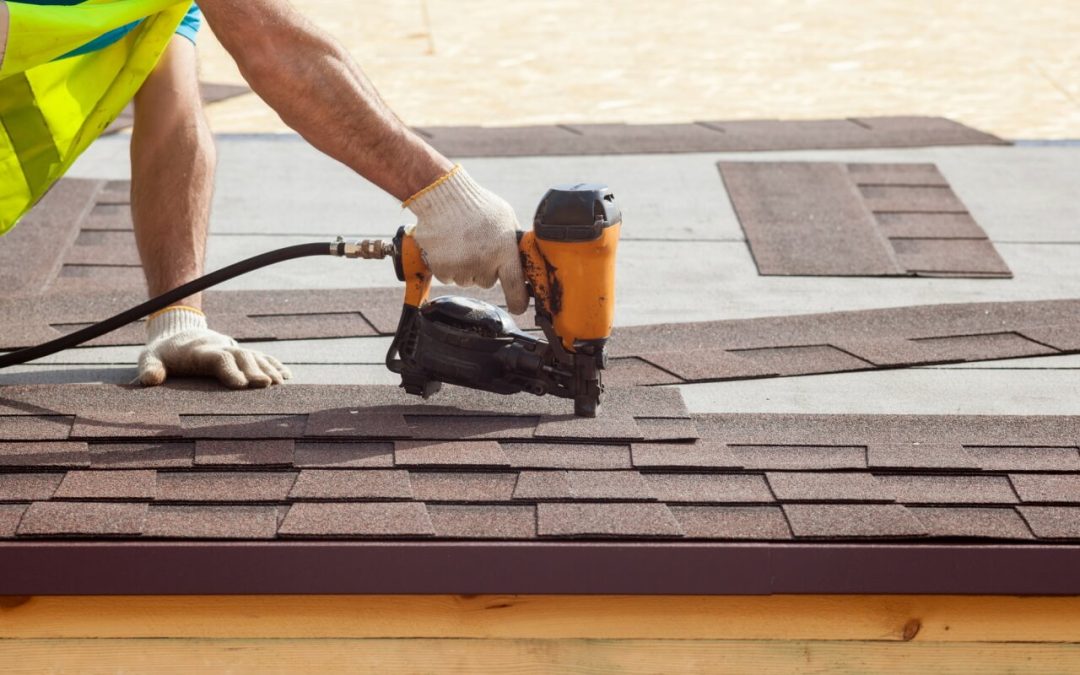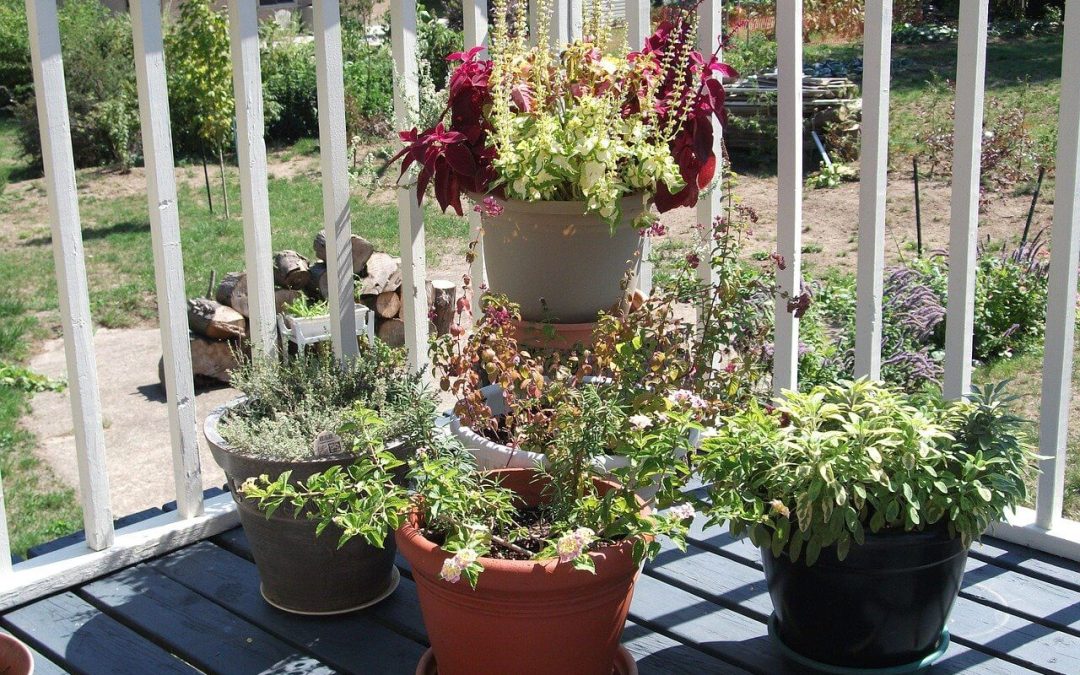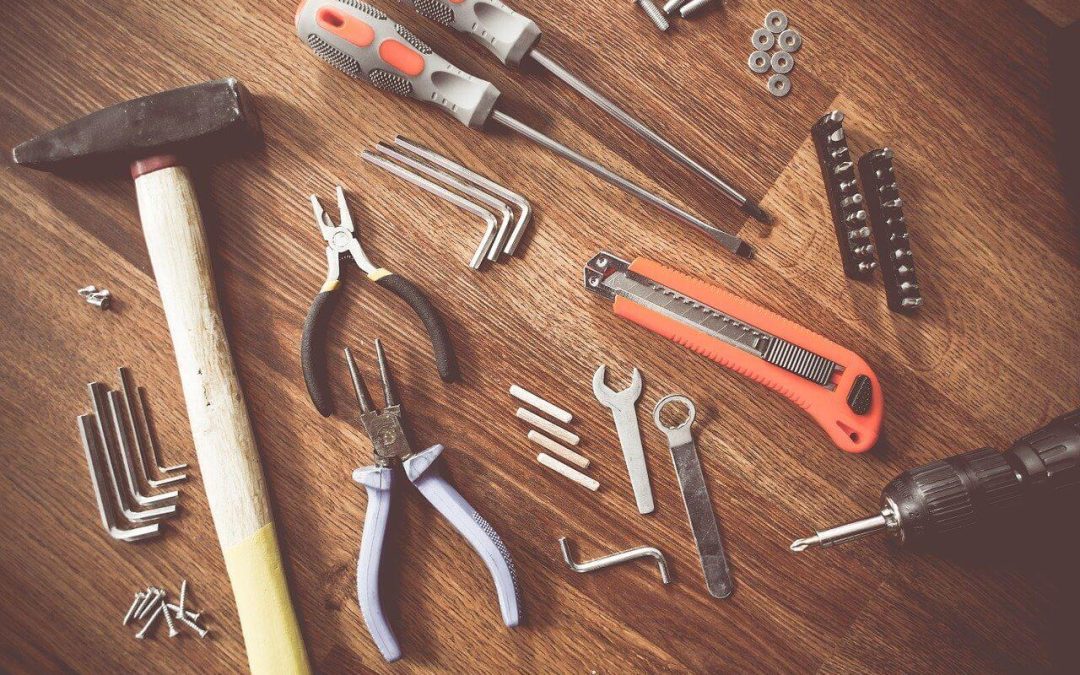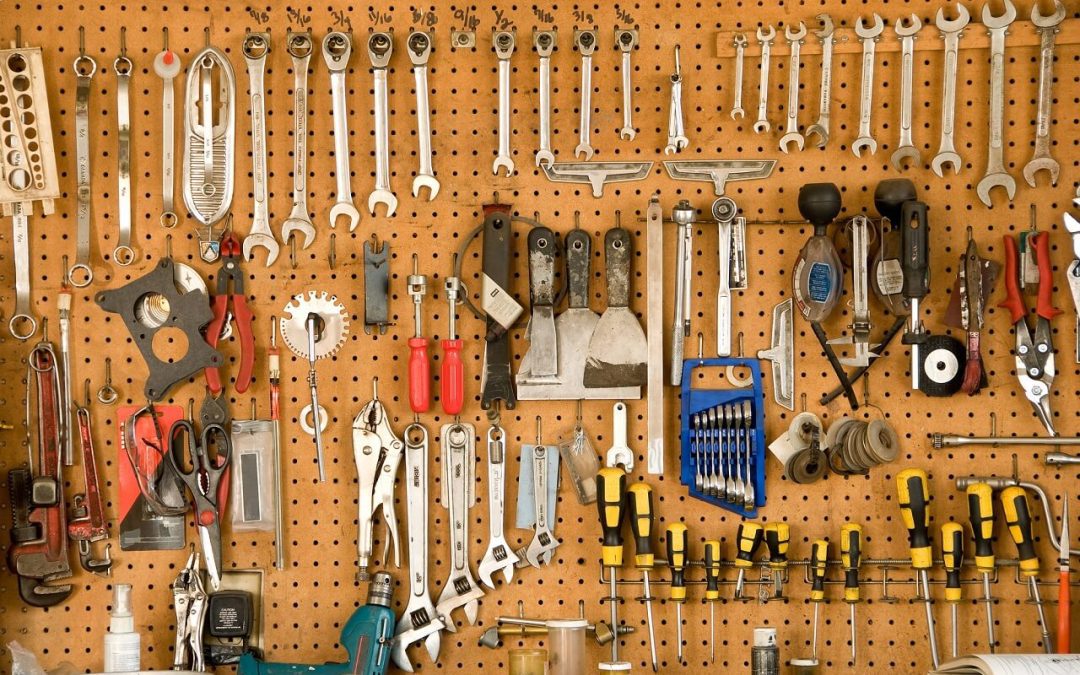
by mwonfor | Jun 19, 2023 | Community, Home Improvement, Homeowners
Your home’s roof is a functional feature contributing to its aesthetic appeal and protection. When selecting the right roofing material, various options are available, each with unique advantages and considerations. Here are common types of roofing materials, highlighting their characteristics, durability, and suitability for different climates and architectural styles. Let’s dive in and discover the perfect roof for your home.
Asphalt Shingles
Asphalt shingles are the most popular and widely used roofing material. They are affordable, easy to install, and come in a range of colors and styles. Asphalt offers good durability, fire resistance, and protection against the elements. They are suitable for most architectural styles and climates, making them a versatile choice.
Metal Roofing Materials
Metal roofs are known for their longevity, durability, and energy efficiency. Available in various materials such as steel, aluminum, and copper, metal roofing can withstand harsh weather conditions and offer excellent resistance to fire, wind, and insects. They are lightweight, low-maintenance, and available in various styles, including standing seam panels and metal shingles.
Clay or Concrete Tiles
Clay and concrete tiles provide a timeless, elegant look to homes. They are durable, energy-efficient, and protect against fire and harsh weather. Clay tiles have a distinct Mediterranean or Spanish architectural appeal, while concrete tiles are more versatile and can mimic the appearance of other materials like wood or slate. Clay and concrete tiles are heavier than other roofing materials and require proper structural support.
Wooden Types of Roofing Materials: Shingles or Shakes
Wood shingles or shakes impart a natural and rustic charm to homes. They are typically made from cedar, redwood, or pine and offer good insulation properties. Wood roofing requires regular maintenance to prevent rot, mold, and insect infestations. It’s important to check local building codes and fire regulations before considering wood, as some areas may have restrictions due to fire hazards.
Slate Roofing
Slate roofing is renowned for its timeless beauty, longevity, and resistance to fire and weather. Made from natural stone, slate tiles are incredibly durable and can last for a century or more. They come in different colors and textures, adding classic elegance to any home. However, slate roofing is heavy and requires professional installation.
Synthetic Roofing Materials
Synthetic roofing materials, such as synthetic slate or rubber composite shingles, offer a cost-effective alternative to natural materials. They mimic the appearance of traditional roofing materials while providing durability, ease of installation, and low maintenance. Synthetic roofing options are often lighter, making them suitable for any style of home.
When choosing the best roofing material for your house, consider factors like durability, aesthetics, climate suitability, and budget. Whether you opt for the affordability of asphalt shingles, the longevity of metal roofing, the elegance of clay or concrete tiles, the rustic charm of wood shakes, the timeless beauty of slate, or the versatility of synthetic materials, there is a roofing option to match your preferences.
Consult with a professional roofing contractor to assess your needs and get expert advice on the best material for your property. A well-chosen roof enhances a home’s curb appeal and provides protection and peace of mind for years.
American Home Inspection Services provides inspections to homebuyers and sellers in Southeastern Michigan. Contact us to schedule an appointment for our services.

by mwonfor | Apr 19, 2023 | Community, Home Improvement, Homeowners
Container gardening is an excellent way for homeowners to create a beautiful and functional garden without needing a large outdoor area or extensive gardening knowledge. Whether you want a small herb garden, a colorful display of flowers, or even vegetables and fruits, gardening in pots and planters is an excellent option. Here are a few tips and tricks to easily create a container garden.
Choose Containers
The containers you choose will be crucial to the success of your container garden. Look for plants that are the appropriate size for the herbs, flowers, and vegetables you want to grow. The containers need good drainage and materials that can withstand the elements. Clay pots are popular for container gardens, but plastic, metal, and wooden containers can also work well.
Select the Right Soil to Create a Container Garden
The soil you choose should be specifically formulated for container gardening. Look for a mix that contains perlite, vermiculite, and materials that help the soil retain moisture while allowing for proper drainage. It’s usually best to purchase or make your own potting mixture. Dirt from your yard may contain pests or diseases that can harm your plants.
Plants for Your Container Garden
When selecting plants for your container garden, consider each plant’s size and growth habits. Choose plants well-suited to your container’s size, and check their water and sunlight requirements. Consider incorporating a mix of plants with different textures, colors, and heights to create a visually interesting display.
Provide Proper Drainage
Adequate drainage is essential to the health of your plants. Make sure your container has holes in the bottom so the roots won’t sit in water, and place a layer of rocks or gravel at the bottom of the container to help improve drainage.
Water Regularly
Container gardens require more frequent watering than traditional gardens because the soil dries quickly. Water plants in containers regularly, checking the soil moisture level before each watering. Ensure the soil is moist but not waterlogged, as this can lead to root rot.
Fertilize When You Create a Container Garden
Container gardens require regular fertilization to help plants grow and thrive. Look for a fertilizer specifically formulated for containers, and follow the instructions on the package. Avoid over-fertilizing, as this can lead to unhealthy, damaged plants.
Companion Planting
Companion planting involves incorporating plants together that benefit each other in some way. For example, planting basil with tomatoes can help repel pests and improve the flavor of the tomatoes. Marigolds are great companion plants for many gardens because they help to keep insects away. Do some research on companion planting to find out which plants work well together.
Container gardening is a fun and rewarding way for homeowners to create a beautiful and functional garden space. With the right containers, soil, plants, and attention, you can easily create a garden on your deck, porch, or patio. Grow fresh herbs, vegetables, and flowers all season long.
American Home Inspection Services provides Southeastern Michigan with certified home inspection services. Contact us to request your appointment.

by mwonfor | Mar 20, 2023 | Community, Home Improvement, Homeowners
Safety is an important part of any DIY project. Whether fixing a broken shelf, painting a wall, or replacing your kitchen sink — having the right tools and knowledge to use them correctly is essential. Here are ten tips for tool safety for DIY projects around the house.
Tool Safety Tips for DIY Projects
1. Tool Safety for DIY Projects: Read the Instructions
Before you begin a project, thoroughly read the instructions. Don’t use any tool unless you understand how each work and the risk associated with its use.
2. Wear Appropriate Safety Gear
Use safety gear when tackling improvements and upgrades around the house. Depending on your project, you may need gloves, goggles, or a dust mask. Protecting yourself from injuries like cuts or splinters is important, even when using manual hand tools.
3. Tool Safety for DIY Projects: Use the Right Tool for the Job
Using the wrong tool for the job can be dangerous. If you don’t have what you need to complete a task, ask a friend or neighbor to borrow the correct tool. Check your community to find a tool-lending library. Some areas have libraries with tools you can borrow for a short period.
4. DIY Project Safety: Keep the Tools Clean
Cleaning and maintaining your tools and equipment will ensure they’re in proper working order and won’t malfunction or cause injury during use.
5. Unplug Power Tools Before Making Adjustments
Before changing settings, replacing a drill bit, or making adjustments to a power tool, unplug it. Unplugging will prevent electric shock and other injuries associated with the tool being powered on while you’re working on it.
6. Tool Safety for DIY Projects: Keep the Work Area Clear
Keep your work space clean, clutter-free, and well-organized to prevent accidents and falls due to clutter. Remove trash and prepare the area for use. After each project, do a deep clean of the space to be ready for the next task.
7. Use the Right Extension Cord
Choose the right extension cord for your project when using power tools outdoors or far from an electrical outlet. Using the wrong cord is a fire hazard.
8. Project Safety Tips: Keep Your Tools Away From Children
It’s important to keep your tools — especially power tools and sharp objects — away from children. Educate kids about the proper use of tools, explain that they are not toys, and verify they understand the dangers of using power tools.
9. Keep the Work Area Well Lit
Make sure the workbench is well-lit — especially when using hand tools requiring precision. Good lighting will help prevent missteps or mistakes from poor visibility.
10. Take Breaks When Necessary
When working on large or difficult projects, taking breaks often is important. You’ll prevent fatigue and accidents due to being tired and less alert.
These tips will help ensure your DIY project is successful and safe. Knowing the risks of each tool and taking the time to do the job right is essential for completing a job well and without injury.
American Home Inspection Services provides inspections to customers in Southeast Michigan. Contact us to request our services.

by mwonfor | Feb 20, 2023 | Community, Home Improvement, Homeowners
As the weather warms up, homeowners will be spending more time outdoors. Clean up the patio furniture and prepare the fire pit for warmer-weather entertaining. As you improve your outdoor living areas, you may notice limited storage space on the porch, patio, or deck. Here are a few ideas for patio storage to keep belongings outside while maintaining tidy outdoor spaces.
Baskets and Crates for Patio Storage
Baskets and crates are an attractive way to contain items on your porch or patio. Purchase fabric or wooden options to complement your outdoor decor. Categorize the things you need to store. Use a basket to hold small items like gardening gloves, tools, and seeds. You might use another for containing lawn games or magazines. Small crates and baskets are easy to move around, depending on where you need them.
Shelving Units
Shelving units come in all shapes and sizes, so you’ll be able to find one that fits perfectly on your porch or patio. Use shelving units to store books, games, plants, etc. They’re also great for organizing tools and supplies you may need when working in the garden or tackling other outdoor projects.
To better organize your shelving, use small plastic bins to contain each group of items. Add labels to make everything easy to find.
Build a Deck Box for Patio Storage
Consider building or investing in a weatherproof deck box if you need more storage space for larger items like outdoor cushions or pool toys. These boxes are designed for outdoor use and are usually water-resistant or waterproof, so the contents won’t get damaged by rain or snow. They come in various styles, so you can choose one that matches your decor.
Storage Furniture
Some patio furniture is designed with storage in mind. Shop for multi-use pieces, like a storage ottoman or bench with hidden compartments beneath the seat. Keep cushions and throw blankets out of the way until you need them. Find a coffee table with shelving underneath to hold books and magazines. Some outdoor tables feature built-in coolers to help keep beverages chilled.
No matter how small your porch, patio, or deck is, there is always a way to maximize storage space using creative solutions. With some planning and a few smart purchases, you’ll make the most of your outdoor living area while keeping everything within easy reach.
American Home Inspection Services offers inspection services to customers in Southeast Michigan. Contact us to request an appointment.

by mwonfor | Jan 19, 2023 | Home Improvement, Home Maintenance
When it comes to home maintenance, having the right tools is essential. Every homeowner should have a toolbox stocked with basic supplies that can be used for routine tasks and any unexpected repairs. It’s best to be prepared for any project that could come up around the house, from minor fixes to more significant projects. Check out these ten tools that every homeowner should have.
Claw Hammer
This is the classic tool for driving nails into wood and pulling them out. The claw can remove any unwanted nails or other objects from walls. Look for a hammer with a sturdy handle that feels comfortable in your hand.
Essential Tools Every Homeowner Should Have: Screwdrivers
You’ll need flathead and Phillips head screwdrivers for tightening screws and bolts. Be sure to get a variety of sizes so you have the right one for any job.
Cordless Drill
This power tool can make quick work of any task that requires drilling holes or driving fasteners, such as hanging a shelf or installing new hardware. Look for one with variable speeds and buy multiple drill bits to cover all your needs.
Pliers are Tools Every Homeowner Should Have
Pliers are indispensable when you need to twist, turn, or hold objects. Look for a good set that includes different types of pliers, like needle-nose pliers and tongue and groove pliers. Use one with insulated handles for any electrical work.
Adjustable Wrench
This is the perfect tool for loosening and tightening nuts and bolts. An adjustable wrench can be used in tight spots where you need extra leverage. While a set of wrenches will give you more precise control over your work, an adjustable wrench will cover most of your basic home needs.
Level
This is a must-have tool for any home project that requires accuracy, such as hanging pictures or building shelves. A level will help ensure your work is straight and level every time. Longer levels will give you a more precise measurement than the shorter ones, and if you’re into gadgets, look into laser levels for high-tech leveling solutions.
Utility Knife
A sharp utility knife can cut through almost anything, from cardboard to carpeting. Look for a knife with a comfortable grip and replaceable blades so you always have a sharp edge when needed.
Tape Measure
Accurate measurements are essential when accomplishing most home projects, from building furniture to painting walls. Get a good retractable tape measure that’s easy to read and measure in both standard and metric units.
Underrated Tools Every Homeowner Should Have: Stud Finders
This is a must-have tool for anyone who wants to tackle wall repairs or hang heavy items like mirrors and cabinets. A stud finder will help you locate the studs in your walls so you can fasten objects securely without damaging your wall.
Flashlight
Having a good flashlight around will make any job easier, especially when you need to look inside walls or find something in a dark corner. Get a lightweight flashlight that’s easy to hold and has adjustable brightness settings so you can see clearly in any situation.
These tools will help ensure you’re prepared for anything that comes up around the house. Stock up your toolbox, and you’ll be ready to tackle any home project that comes your way.
American Home Inspection Services provides inspection in Southeast Michigan. Contact us to schedule an appointment for our services.

by mwonfor | Nov 22, 2022 | Community, Home Improvement, Homeowners
If you’re planning to list your home on the market, make sure you can recoup any money you spend on improvements for the sale. Unfortunately, not all updates are created equal. Let’s discuss four popular home improvement projects that won’t boost property value.
1. Projects that Don’t Boost Property Value: Swimming Pools
While a swimming pool may be a great addition to your home for you and your family, it’s not necessarily a selling point for most buyers. Many potential buyers will see a swimming pool as more of a liability than an asset. Not only do pools require a lot of costly maintenance, but they can also be dangerous, especially for small children. Reconsider adding a pool to your home before putting it on the market.
2. Sunrooms
When it comes to home improvement projects, not all of them are created equal. Some updates – like adding a sunroom – are expensive and add little value to your home. Sunrooms can be pricey to build. Depending on the size and features you want, this addition can cost anywhere from $10,000 to over $50,000. While they might be enjoyable for you and your family to use, a sunroom generally doesn’t offer a good return on investment.
3. Luxury Bathrooms Don’t Boost Property Value
Luxury bathrooms are popular among homeowners. However, they don’t pay for themselves in resale value. Potential buyers shop for homes based on the number of bedrooms and square footage rather than homes with high-end bathroom features. While a new bathroom might make your life more comfortable, it’s not likely to add much value to your home.
4. Custom Closets
Like luxury bathrooms, custom closets have become increasingly popular in recent years. However, they often come at a high price. In addition, custom closets can be difficult to install and may not fit seamlessly into the existing layout of your home. Potential buyers might have a different vision for the use of closet space. For these reasons, custom-designed closets are typically not a good investment when selling your home.
If you’re selling your home soon, choose your home improvement projects wisely. Some projects – like building a swimming pool or installing a sunroom – may offer little return on investment. Instead, focus on projects that appeal to many potential buyers. Paint the exterior of the home or upgrade the kitchen appliances. By making intelligent choices regarding home improvements, you can help ensure that your property sells quickly and at the right price.
American Home Inspection Services offers inspection in Southeast Michigan. Contact us to schedule an appointment for our services.






